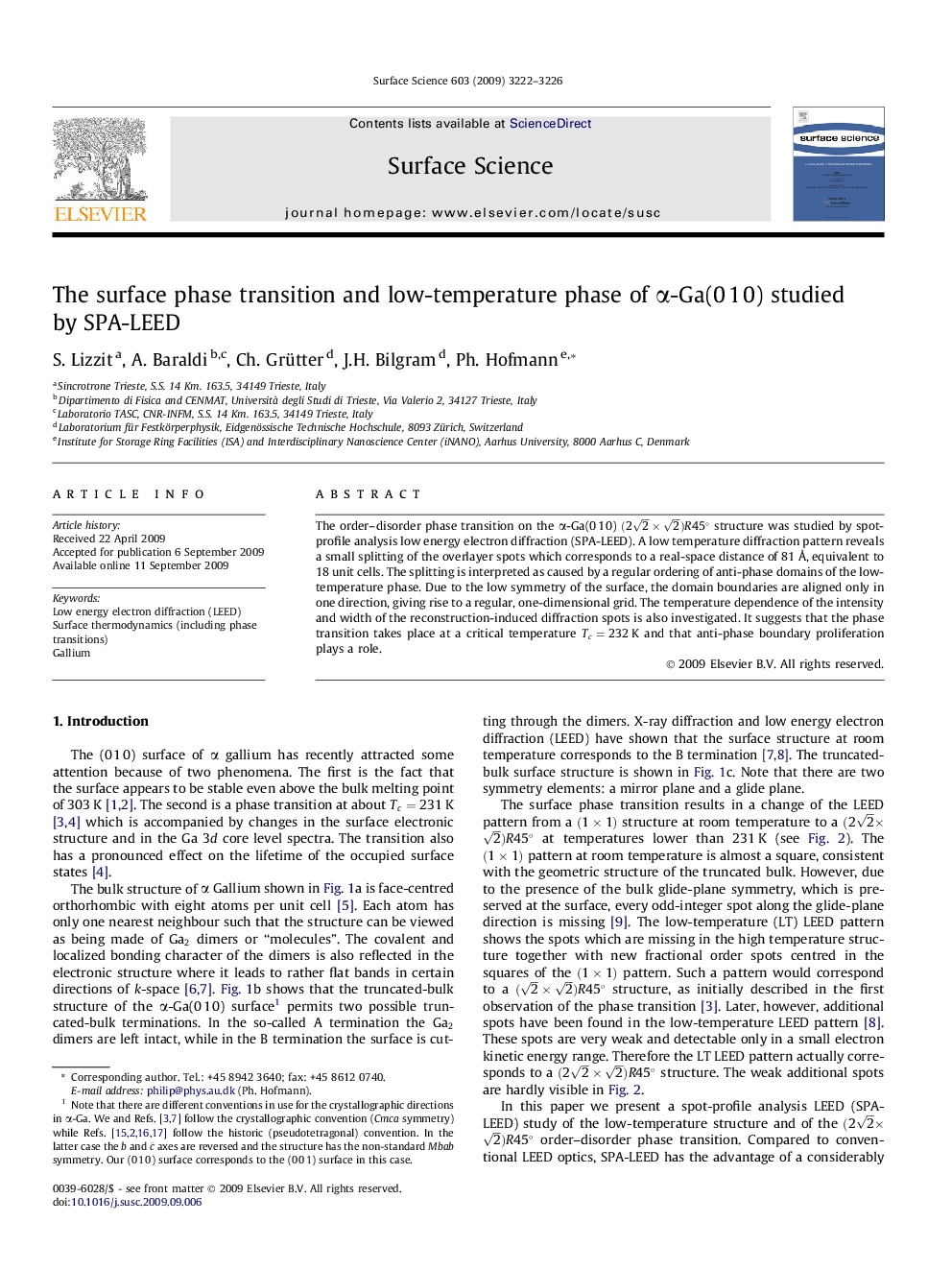| Article ID | Journal | Published Year | Pages | File Type |
|---|---|---|---|---|
| 5423906 | Surface Science | 2009 | 5 Pages |
Abstract
The order-disorder phase transition on the α-Ga(0 1 0) (22Ã2)R45° structure was studied by spot-profile analysis low energy electron diffraction (SPA-LEED). A low temperature diffraction pattern reveals a small splitting of the overlayer spots which corresponds to a real-space distance of 81 Ã
, equivalent to 18 unit cells. The splitting is interpreted as caused by a regular ordering of anti-phase domains of the low-temperature phase. Due to the low symmetry of the surface, the domain boundaries are aligned only in one direction, giving rise to a regular, one-dimensional grid. The temperature dependence of the intensity and width of the reconstruction-induced diffraction spots is also investigated. It suggests that the phase transition takes place at a critical temperature Tc=232Â K and that anti-phase boundary proliferation plays a role.
Keywords
Related Topics
Physical Sciences and Engineering
Chemistry
Physical and Theoretical Chemistry
Authors
S. Lizzit, A. Baraldi, Ch. Grütter, J.H. Bilgram, Ph. Hofmann,
